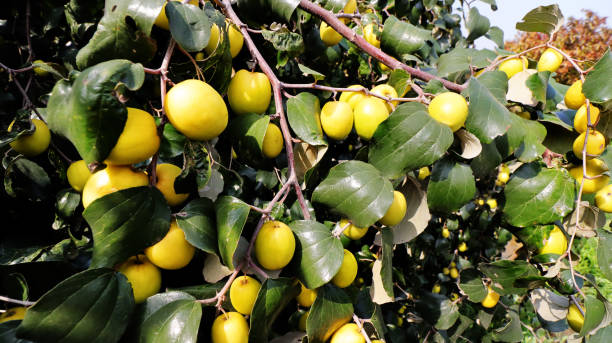
Introduction
Imagine strolling through your backyard and plucking ripe, homegrown fruits from your trees. Backyard fruit trees not only provide a bountiful harvest but also enhance the beauty of your outdoor space. In this guide, we’ll explore the joys of cultivating fruit trees in your backyard and offer tips to ensure a thriving orchard.
Choosing the Right Fruit Trees
The key to a successful backyard orchard is selecting fruit trees that thrive in your climate and soil conditions.
Consider Local Climate: Choose fruit tree varieties that are well-suited to your local climate. Certain trees may require a certain number of chilling hours during winter to produce fruit successfully.
Soil Quality: Conduct a soil test to determine the pH and nutrient levels. Different fruit trees have specific soil requirements, and ensuring the right conditions will contribute to healthy growth.
Space Planning: Consider the available space in your backyard. Some fruit trees, like dwarf varieties, are suitable for smaller areas, while larger yards can accommodate standard-sized trees.
Popular Backyard Fruit Trees
From apple and pear trees to citrus varieties, the choices for backyard fruit trees are vast.
Apple Trees: With numerous varieties available, apple trees are a versatile choice. Consider dwarf apple trees for smaller spaces.
Citrus Trees: Lemon, orange, and lime trees are popular for their aromatic blossoms and fresh, tangy fruits. They thrive in warm climates.
Peach Trees: Peaches are a delicious summer treat. Choose a variety that suits your local climate and provides well-drained soil.
Cherry Trees: Cherries come in sweet and tart varieties. Ensure proper pollination by planting at least two trees or selecting self-pollinating types.
Plum Trees: Plums are hardy trees that produce sweet, juicy fruits. They are suitable for various climates and soil types.
Planting and Care
Proper planting and ongoing care are crucial for the success of your backyard fruit trees.
Planting: Follow planting guidelines for each specific fruit tree. Provide adequate spacing between trees to ensure proper air circulation.
Watering: Establish a consistent watering schedule, especially during dry periods. Deep, infrequent watering is generally preferred over frequent, shallow watering.
Fertilizing: Apply a balanced fertilizer in the spring and, if needed, based on soil test recommendations. Be cautious not to over-fertilize, as it can lead to excessive foliage growth at the expense of fruit production.
Pruning: Regular pruning helps shape the tree, promote airflow, and remove dead or diseased branches. Prune during the dormant season for most fruit trees.
Pest Management
Protect your fruit trees from common pests to ensure a healthy harvest.
Monitor Regularly: Keep an eye out for signs of pests, such as discolored leaves, holes, or distorted fruits. Early detection allows for prompt intervention.
Natural Predators: Encourage natural predators like birds and beneficial insects that feed on pests. Avoid excessive use of pesticides that may harm these allies.
Disease Prevention: Apply preventive measures, such as copper sprays or horticultural oils, to minimize the risk of fungal diseases.
Harvesting and Enjoying Fruits
The culmination of your efforts is the joy of harvesting and savoring the fruits of your labor.
Timing: Harvest fruits when they are ripe but firm. Follow specific guidelines for each fruit variety regarding color, size, and ease of detachment.
Storage: Store fruits appropriately to maintain freshness. Some fruits can be stored in a cool, dark place, while others may benefit from refrigeration.
Sharing the Bounty: If your harvest is abundant, share the fruits with friends, family, or neighbors. It’s a delightful way to spread the joy of homegrown produce.
Conclusion
Cultivating fruit trees in your backyard is a rewarding endeavor that offers both visual and culinary delights. By selecting the right fruit trees, providing proper care, and managing pests effectively, you can transform your outdoor space into a thriving orchard. The joy of plucking ripe, succulent fruits from your backyard is an experience that connects you to nature and the satisfaction of growing your food.
How to Choose the Best Floor Tiles for Every Room
March 26, 2025Elevate the Beauty of Your Space With Parquetry Flooring
February 27, 2025Transform Your Space With These Stainless Steel Handrails
February 27, 2025
Leave a reply Cancel reply
More News
-
7 Mistakes to Avoid When Cleaning Your Rugs
April 5, 2023 -
Floor Polishing Tips You Need to Know for Superior Results
February 14, 2024 -
What is siding, and what are the options?
March 22, 2024







